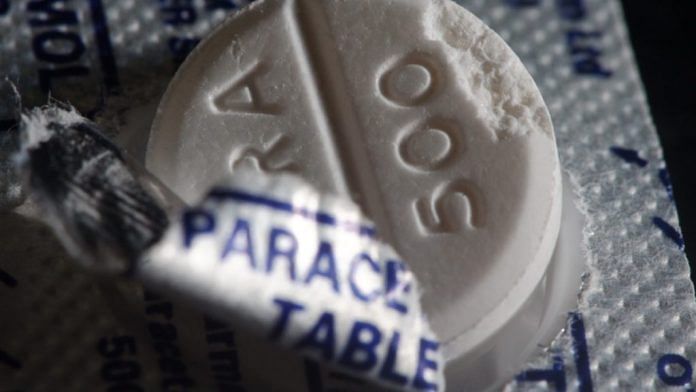New Delhi: Making high-dose tablets of paracetamol, a popular pain-killer, available at pharmacies can increase the incidence of paracetamol poisoning, a peer-reviewed study by Swiss researchers has said.
Based on the findings, researchers from ETH Zurich, a public research university, have said that people should not keep popping paracetamol tablets if the recommended dose fails to ease their pain.
For adults, the recommended maximum daily dosage is 4 grams. An overdose of paracetamol can lead to liver failure with fatal outcomes, or the requirement of a liver transplant.
Paracetamol is available in Switzerland in tablets of 500 milligram (mg) and 1,000 mg dosage. The latter dosage was introduced in 2003, and can be bought when prescribed by a physician, researchers from ETH Zurich have noted in their study.
The researchers sought to investigate if the availability of the higher-dose tablets could be linked to increased reports of paracetamol poisoning. For this, they analysed sales figures from the Swiss pharmacists’ association Pharmasuisse and data from the Tox Info Suisse poison control centre on poisoning cases for the period before and after the higher-dose tablets were launched (2000-2008).
From the sales data, the team found that the 1,000 mg tablets have rapidly grown in popularity since their introduction. In 2005, they outsold the 500 mg tablets for the first time. By 2018, sales of the 1,000 mg tablets were ten times those of the 500 mg ones.
During the same period, the number of paracetamol poisoning cases increased too, the researchers said.
Between 2005 and 2008, there was a 40 per cent increase in poisoning cases, rising to 786 from 561. In the following years, the number of poisoning cases continued to increase, reaching 1,188 in 2018.
“On that basis, we can conclude that the increased number of poisoning cases is associated with the availability of the 1,000 milligram tablets,” Stefan Weiler, co-author of the study and scientific director of Tox Info Suisse, said in a statement.
“It is a very safe drug, but only for short-term pain relief and as long as the daily dosage does not go above the recommended range,” Andrea Burden, professor of pharmacoepidemiology at ETH Zurich, added.
Also Read: After HCQ, countries begin to call India for the humble pain and fever tablet paracetamol
‘Review prescription’
In light of the findings, the team recommends that there should be a critical review of how the 1,000 milligram tablets are prescribed and dispensed.
“One problem with paracetamol is that it is not effective for all patients or against all forms of pain,” Burden said.
“If the drug doesn’t help to ease someone’s symptoms, they may be tempted to increase the dosage without consulting a medical professional. That’s the real problem,” she added.
This where the dosage of the tablet becomes important, as it is very easy to exceed the maximum daily dosage by taking just a few extra of the 1,000 milligram tablets, the researchers said.
“We recognise that pain management is challenging, and other medications may have severe adverse effects. But, if paracetamol doesn’t have the desired effect, it’s important not to simply take more tablets. Instead, people should seek professional medical advice in order to find the best therapeutic option,” Burden added.
In India, paracetamol is available in multiple dosages, namely 500 mg, 600 mg and 1,000 mg.
Also Read: After Oxford Covid vaccine dosing, trial participants to be given paracetamol ‘on SOS basis’



